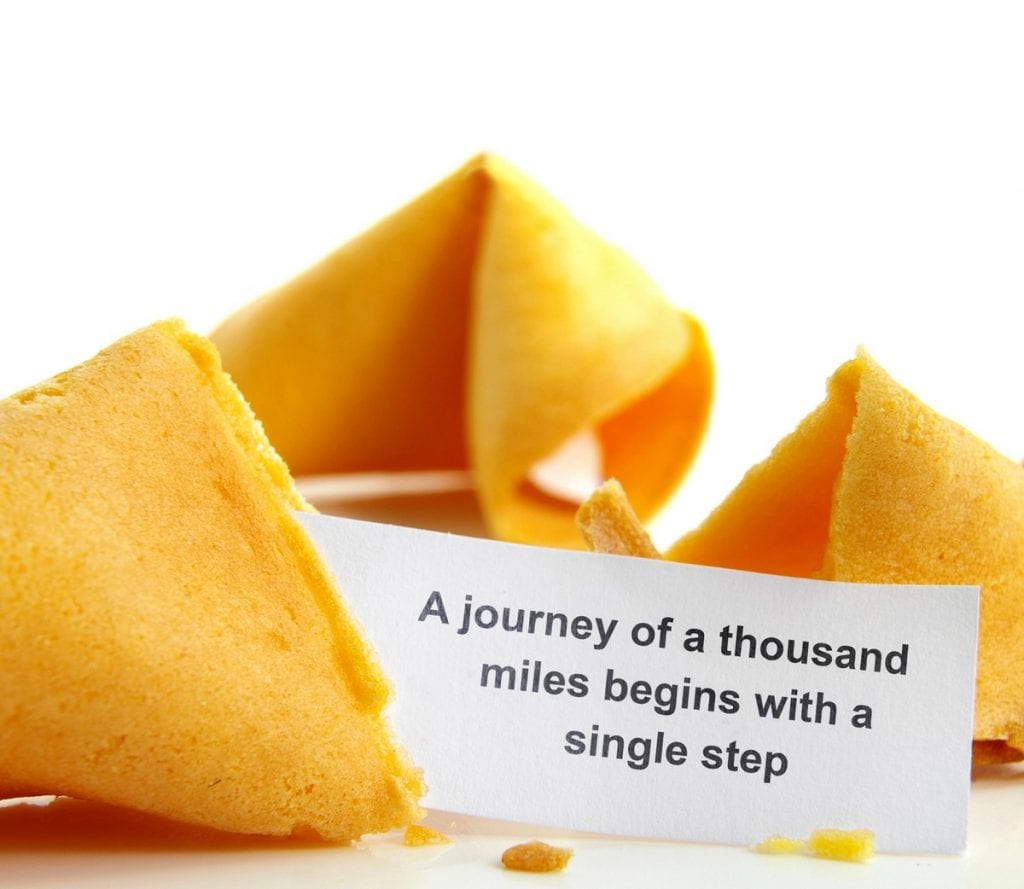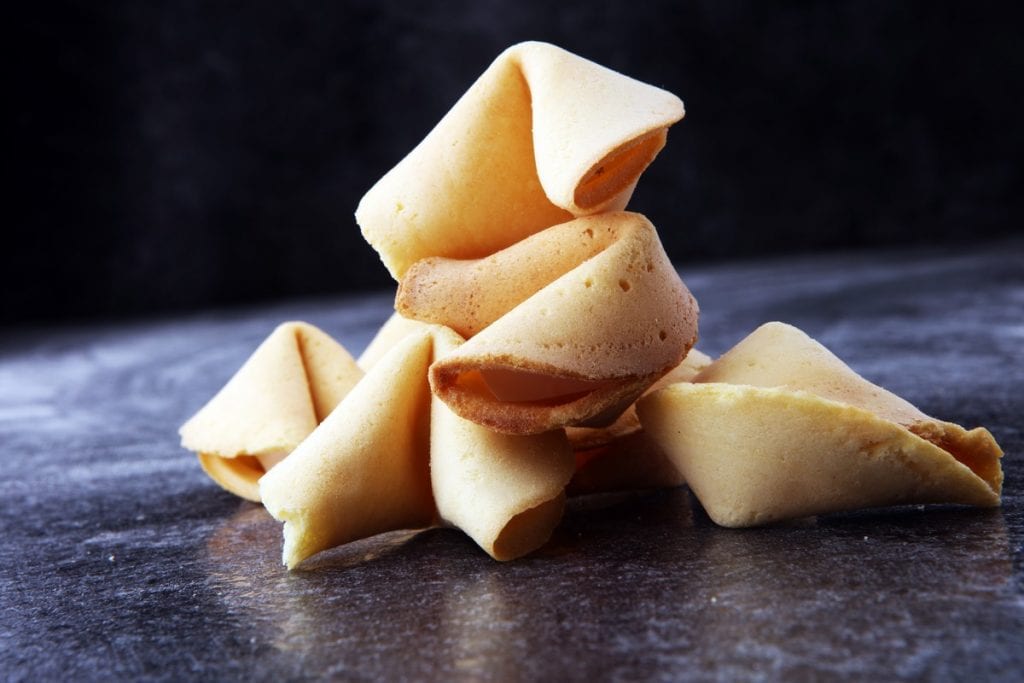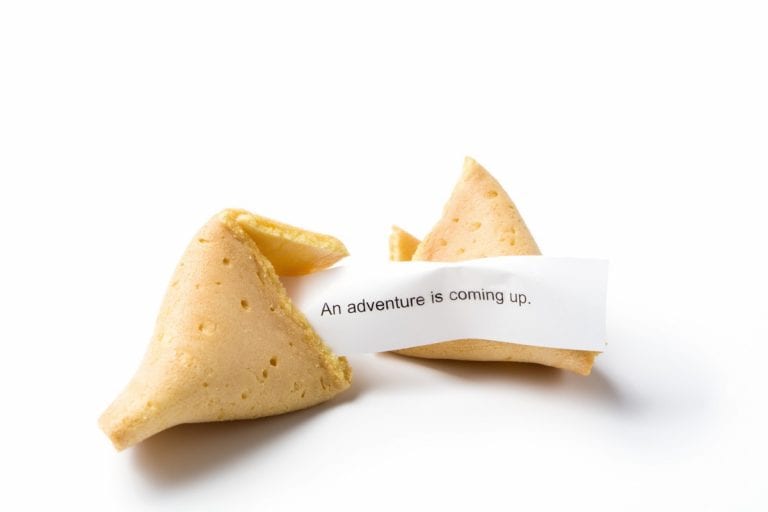Fortune cookies and the study of a Japanese researcher
Born in Japan, and then famous in America, fortune cookies––now available in many Chinese restaurants around the world––have nothing to do with China. The origin of the thin shells that enclose a small note with prophetic phrases is in fact to be traced back to the Japanese tradition, as revealed in 2008 by Japanese researcher Yasuko Nakamachi, who based her degree thesis on this very topic. We owe to her the discovery of the origins of these treats. The first time she saw them was in a Chinese restaurant in New York, then again in Kyoto, at the Sohonke Hogyokudo bakery, where she found cookies that were larger and darker than the American ones, containing a "fortune" and called tsujira senbei. Continuing with her research, Nakamachi then discovered an illustration of the same cookies dated 1878 in a 19th-century storybook “Moshiogusa Kinsei Kidan,” further proof of her thesis on the roots of fortune cookies.

From Japan to the United States: the journey of the fortune cookie
A passionate study which lasted six years, spent between libraries and travels around the world, in search of testimonies and traces of the past of these specialties that at the time were a total craze in New York Chinatown. Another literary artifact examined is by Tamenaga Shunsui, a Japanese author who tells the story of a woman who managed to calm two angry ladies by offering them the tsujira senbei containing fortunes. But how did this tradition come to the United States? Also according to Nakamachi, the arrival of fortune cookies to America dates back to the time of Japanese and Chinese immigration, during the WWI. In particular, it was Makoto Hagiwara, keeper of the tea gardens in Japan, who offered them at the Tea Garden in San Francisco. To add to their popularity was furthermore singer David Jung, of Chinese origin, who in 1916 founded The Hong Kong Noodle Company, and started to produce these biscuits too.
Fortune cookies land in Chinese restaurants
Already at the end of the 1950s, there were about 250 million fortune cookies prepared every year (today, about 3 billion), almost exclusively by Chinese restaurateurs. The latter, in fact, took advantage of the internment of Japanese prisoners during WWII to take over production in America, where it remained their prerogative even after the war. San Francisco and Los Angeles were the first cities to welcome the Far East tradition - slightly modified - but soon everywhere in the United States, New York in the first place, began to serve fortune cookies, which then started appearing on the menus of Chinese restaurants. In short, a Japanese invention borrowed from the Chinese but that was deeply American: fortune cookies in fact immediately conquered the American public, to the point of being offered by Senators Stuart Symington and Adlai Stevenson during the Democratic Convention of 1960, as part of the campaign for the Presidential elections, a move also imitated 5 years later by the then aspiring mayor of New York, Abraham Beame.

The authentic Japanese fortune cookie recipe
Despite their worldwide fame, fortune cookies are still prepared in Japan today, albeit in smaller quantities. They are mainly produced in the Fushimi Inari-taisha neighbourhood, and generally contain quotes and aphorisms rather than true prophecies or auspices. The original recipe also differs slightly compared to the fortune cookies we all know today: the real sujira senbei are larger in size, involve the use of sesame and miso in the dough, and for this reason the colour is darker. The historical name linked to the Japanese tradition is Matsuhisa, a family that has been producing fortune cookies for over 200 years, and which has repeatedly clarified in the past that the note must be inserted in the side slot and not inside the cake: an ancient practice that has begun to prevent customers from accidentally ingesting their fortune.
by Michela Becchi


 Wine promotion, vineyard uprooting, and support for dealcoholised wines: the European Commission's historic compromise on viticulture
Wine promotion, vineyard uprooting, and support for dealcoholised wines: the European Commission's historic compromise on viticulture A small Sicilian farmer with 40 cows wins silver at the World Cheese Awards
A small Sicilian farmer with 40 cows wins silver at the World Cheese Awards Women are the best sommeliers. Here are the scientific studies
Women are the best sommeliers. Here are the scientific studies Where to eat at a farm stay in Sicily: the best addresses in the Provinces of Trapani, Palermo, and Agrigento
Where to eat at a farm stay in Sicily: the best addresses in the Provinces of Trapani, Palermo, and Agrigento Wine in cans, bottle-fermented, and alcohol free: the unstoppable change in Gen Z’s tastes
Wine in cans, bottle-fermented, and alcohol free: the unstoppable change in Gen Z’s tastes






